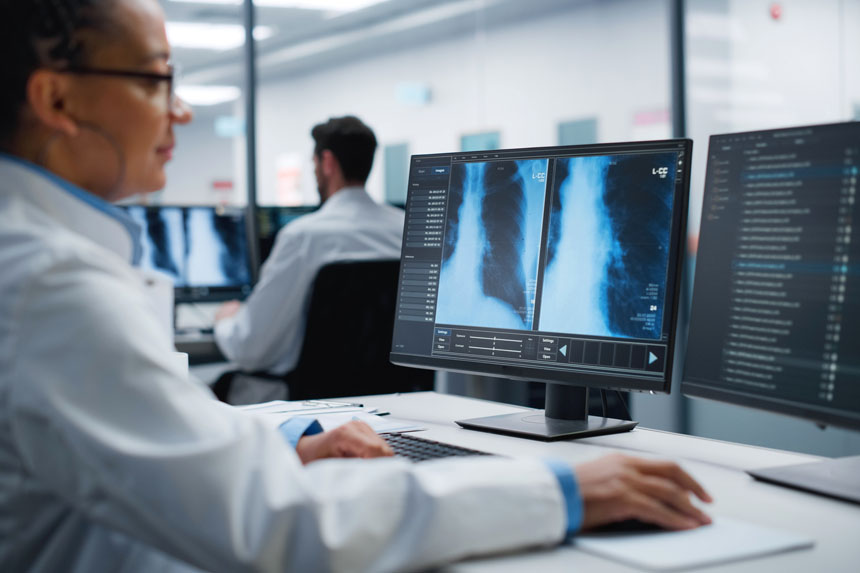In 2025, there’s a decent chance that your phone or watch knows more about you than your doctor does.
That’s not a knock against physicians; they’re just less portable—and less amenable to being toted around—than your average smartphone or smartwatch.
And, unlike our severely overworked physician pool, smartphones and wearable health monitors like smartwatches and fitness trackers can collect your physiologic data constantly (or at least until they run out of battery).
All of these devices make up a rapidly emerging market called remote patient monitoring (RPM). And while we’re bullish on RPM’s potential to improve care and lower cost, the technology isn’t taking off as fast as you might think. We explore why below.
Who’s using RPM?
RPM devices are everywhere: About 30% of individuals in our consumer dataset of 250 million unique consumers aged 18 and older are highly likely to own a health or fitness app, and 91% of Americans own a smartphone, according to a 2024 Pew Research Center survey. And that’s not even counting the hundreds of thousands of Americans living with implanted pacemakers or glucose monitors that feed data continuously to remote apps or electronic health platforms.
Now that so many consumers are comfortable with the routine collection of their health data, you might expect the entire medical community to be clamoring to get a piece of the action. Such a wealth of raw, remotely accessible health information could shape treatment plans, help doctors catch concerns before they develop into full-blown problems, and even inform the development of new drugs and devices to treat more patients more effectively.
Some providers have bought into remote patient monitoring, especially in recent years. Data from our Atlas All-Payor Claims product shows that volumes of top RPM procedures were up nearly 1,300% from 2019 through the end of 2022.
However, that rapid growth doesn’t seem to reflect widespread adoption. A minority of medical practices offer RPM services, with earlier reports by the Medical Group Management Association suggesting that only 25% had done so in recent years.
So what’s holding doctors back from using consumer wearable data and issuing RPM devices more broadly?
Data security remains a concern
Healthcare providers have an ethical and legal obligation to protect patients’ health information. So it’s not hard to understand why doctors might hesitate to adopt relatively new technology that presents additional opportunities for data theft.
Around two major healthcare data breaches happen every day, according to the Department of Health and Human Services. To make matters worse, the rate of successful breaches seems to be going up.
Issuing patients devices that interface with a practice’s network infrastructure or electronic health records (EHRs) could raise red flags for data security, especially if those devices are lost, stolen, hacked, or intentionally misused.
Of course, data security isn’t all about cybercrime. Accuracy matters, too. If a curious kid decides to commandeer their parent’s Wi-Fi-enabled blood pressure cuff, for example, the resulting readings could prompt concern or unnecessary intervention, or even lead to clinical trial noncompliance.
But doctors don’t need to throw caution to the wind when adopting RPM. The National Institute of Standards and Technology has issued guidance around the risks associated with telehealth and RPM, as well as security criteria for potential telehealth platform partners.
Practices (and patients) may not have access to training or infrastructure
To get RPM working in a way that supports patient care, ensures accuracy and security, and eases workloads, a medical practice needs to train its entire team in the use of these devices and systems.
That training costs money and time (two resources not always in ample supply at the average family doctor’s office), and any knowledge gained doesn’t necessarily transfer from one device or system to another.
Some RPM vendors include training and implementation assistance in their sales packages, but providers looking to incorporate data from patients’ consumer-grade wearables may be on their own. Plus, the patients themselves will also need training—ensuring consistent, accurate readings isn’t always as easy as strapping on a smartwatch, after all.
Even if a provider is ready to commit to RPM, their IT team may not be. Most EHRs and care management systems require third-party tools to interface with RPM tech, but IT decision-makers may prefer to keep these processes in-house to reduce security risks, ease integration with other systems, or retain total ownership of the data within. Some practices simply lack the infrastructure to effectively incorporate RPM, especially those in rural regions or those that utilize proprietary software systems.
Patients in these regions can also struggle without access to infrastructure: The latest Broadband Progress Report from the Federal Communications Commission found that around 19 million Americans still lack access to the high-speed internet that facilitates effective RPM. That potentially disqualifies about a quarter of the country’s rural population and one-third of people living in tribal jurisdictions from taking advantage of RPM.
Reimbursement doesn’t always align with RPM’s value
The Centers for Medicare and Medicaid Services seems to believe in RPM, as they’ve introduced 10 new RPM-related procedure codes for Medicare reimbursement within the last five years.
As of late 2024, 42 state Medicaid programs and about 70 private payors currently reimburse providers for these services, according to the Center for Connected Health Policy. For many providers, the choice to build out RPM-based service lines comes down to the payor mix of their patient base (and thus their likelihood to be fully reimbursed).
To make matters more complicated, the U.S. healthcare system currently operates using a blend of fee-for-service and value-based payment models, leaving providers to rely on revenue streams from both models.
RPM is ideal for the value-based approach, delivering more health insights with fewer patient-provider touchpoints. But it also leaves providers with fewer opportunities to bill for services—and fewer resources for the services that return the most revenue.
Introducing additional RPM procedure codes could help providers feel more fairly compensated for a wider variety of RPM services, but those codes need to be applied in ways that serve patients’ needs as well as providers’.
For example, before a provider can bill for RPM device setup and patient education, the device they issue must first transmit 16 days of patient-generated health data. If their patient’s condition requires a shorter period of monitoring, any time spent setting up the device and educating the patient would not be reimbursable.
Providers who treat patients with more acute medical needs could see this as an incentive to opt for in-person monitoring instead.
Read the full report
Just ask your smartphone (or your nearest doctor): There’s way more to the story of remote patient monitoring than the challenges it currently faces.
If you want a full, data-driven assessment of the current RPM landscape, a deeper dive into the factors holding RPM back, and potential ways to leverage RPM data in your sales strategy, be sure to read our full report: Realizing the potential of remote patient monitoring.
Looking to get your hands on the healthcare commercial intelligence behind the report? Sign up for a free trial today and see how the Definitive Healthcare platform gives you insights into the technologies, providers, and networks that define the market.





